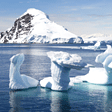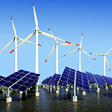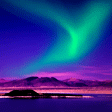- Home >
- Our Actions >
- Ambassador report
4
Comments
Urban Heat Island - Research Perspectives |
|---|
|
by Adam Zhou | 19-08-2017 22:46
|
|
China?s state of urbanization in relation to economic development is undeniable, bearing in mind both population growth as well as city to rural ratios. Currently, approximately half of the world lives in the former one and this is set to 67% by the next decade. Due to development of factories, augmented usage of public vehicles, and others of the ilk, a phenomenon has emerged where in which the city centers are significantly warmer than the surrounding rural areas. This, called the Urban Heat Island (UHI) is commonly characterized by aerosols (fine atmospheric particles) which in turn creates haze pollution, blocking out the path for light to escape back out. Not only does this harm the environment, however, but also public health issues like heat strokes and respiratory problems to name a few. Previous studies have mainly focused on China?s vegetation land and albedo effects because of the main literal factor of what constitutes the difference between city and country. Surface properties include the following:
However, details left open-ended in collected data led to more research done, one prominent example done by the Yale School of Forestry and Environmental Science. Further focus on how aerosols and the haze, as stated previously, can impact precipitation patterns in the region, as well as forcing changes in radiation levels. Regarding the latter case, it?s especially interesting. Two different situations bring two different results: smaller particles scatter shortwave radiation which gives a cooling sensation (and are more prominent in the day) and vice versa. Climate can also correlate with this since density correlated with humidity levels show intensified warming. Additional climate change model simulations such as the ones below are support of concrete evidence.
In general however, (see figure below), the intended result is that of the expected. Hopefully, in the near future, even more variables can arise and serve as a pinpoint on what to do and what not to do. Rising global temperatures is best to be avoided for the best of our personal wellbeing and biodiversity and perhaps, UHI can be our best bet at this. Works Cited: Cao, Chang, et al. ?Urban Heat Islands in China Enhanced by Haze Pollution.? Nature News, Nature Publishing Group, 23 Aug. 2016, www.nature.com/articles/ncomms12509. Hays, Brooks. ?Study Quantifies Haze's Role in China's Urban Heat Island Effect.? UPI, UPI, 23 Aug. 2016, www.upi.com/Science_News/2016/08/23/Study-quantifies-hazes-role-in-Chinas-urban-heat-island-effect/2051471974660/. Ouyang, Andrea. Sep 06, 2016. ?Haze Found as Key Element in Urban Heat Island Effect in China.? Yale Daily News Haze Found as Key Element in Urban Heat Island Effect in China Comments, yaledailynews.com/blog/2016/09/06/haze-found-as-key-element-in-urban-heat-island-effect-in-china/. Wang, Wei-Chiung. ?Urban Heat Islands in China.? Geophysical Research Letters, Dec. 1990. <http://www.informath.org/apprise/a5620/b23.pdf> |

|
|
|










 Previous : Resource Depletion ~Late post...
Previous : Resource Depletion ~Late post...









4 Comments
thanks for sharing
Posted 02-02-2018 16:48
good work man
Posted 02-02-2018 16:48
Adam, thank you for your report. I am sure you have read a great deal of works. This was more than just basic information. Great job! I am sure other Ambassadors would find this report highly informative.
Posted 21-08-2017 01:23
Hi Adam! Thanks for sharing your report on UHI:)
The result seems to be successful in finding the causes and effects of UHI. Were there any implications regarding the solutions to UHI?
Posted 20-08-2017 22:12